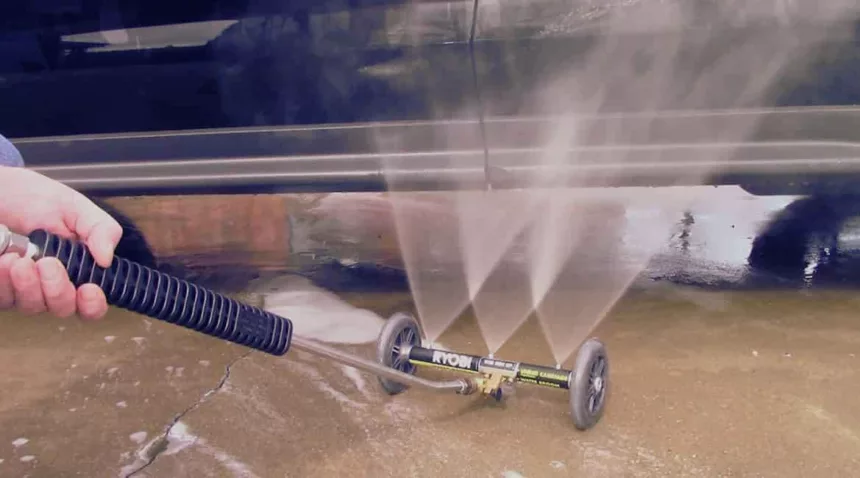Your car’s undercarriage is often overlooked when it comes to cleaning, but it’s just as important as the rest of the car. The undercarriage is exposed to all sorts of dirt, grime, and debris, which can build up and cause rust and other damage.
Cleaning your car’s undercarriage regularly will help to protect it from these problems and extend the life of your car. In this comprehensive guide on IchieTech, we’ll walk you through the steps to effectively clean your car’s undercarriage, ensuring its longevity and performance on the road.
What You Will Need
- Pressure washer
- Degreaser
- Long-handled brush
- Gloves
- Safety glasses
- Creeper (optional)
How to Do It
1. Choose a safe location: You’ll need a flat, level surface where you can work safely under your car. A garage is ideal, but you can also use a driveway or parking lot.
2. Park your car and secure it: Make sure your car is in park and the parking brake is engaged. You may also want to chock the wheels to prevent the car from rolling.
3. Raise the car: You’ll need to raise your car high enough to be able to work comfortably under it. You can use car jacks or a car lift.
4. Clean the undercarriage with a pressure washer: Start by spraying the undercarriage with water to loosen any dirt and grime. Then, apply a degreaser to the entire undercarriage. Let the degreaser sit for a few minutes to break down the dirt.
5. Rinse the undercarriage with water: Use a high-pressure hose to rinse the undercarriage thoroughly. Be sure to get in all the nooks and crannies.
6. Dry the undercarriage: Use old towels or chamois to dry the undercarriage as much as possible. Leaving moisture on the undercarriage can lead to rust.
7. Apply a rust inhibitor: Once the undercarriage is completely dry, you can apply a rust inhibitor to help protect it from rust. There are many different types of rust inhibitors available, so be sure to choose one that is specifically designed for undercarriages.
8. Lower the car: Once you’re finished cleaning the undercarriage, you can lower the car.
Tips
- Wear gloves and safety glasses to protect yourself from dirt, grime, and chemicals.
- Use a long-handled brush to reach areas that are difficult to get to with a pressure washer.
- If you don’t have a pressure washer, you can use a hose and a bucket of soapy water to clean the undercarriage.
- Be sure to rinse the undercarriage thoroughly to remove all traces of soap and degreaser.
- If you live in an area with harsh winters, you may want to clean your car’s undercarriage more often to prevent rust.
Cleaning your car’s undercarriage may seem like a daunting task, but it’s actually quite easy to do. By following these simple steps, you can help to protect your car from rust and other damage.
Additional Tips
- You can also use a commercial undercarriage cleaner to clean your car’s undercarriage. These cleaners are specifically designed to break down dirt and grime.
- If you have a lot of dirt and grime on your car’s undercarriage, you may want to take it to a professional detailer.
- Cleaning your car’s undercarriage regularly will help to keep it looking its best.
In addition to the tips above, here are some additional things to keep in mind when cleaning your car’s undercarriage:
- Avoid using high-pressure water on electrical components or seals.
- Be careful not to damage the fuel tank or exhaust system.
- If you have any questions or concerns, be sure to consult a qualified mechanic.
Conclusion
Cleaning your car’s undercarriage is an important part of maintaining your car. By following these steps, you can keep your car’s undercarriage clean and well-maintained. Regular undercarriage cleaning not only preserves the aesthetic appeal of your vehicle but also contributes to its overall longevity and performance on the road. Make this process a part of your routine car care to ensure a smooth and trouble-free driving experience.










